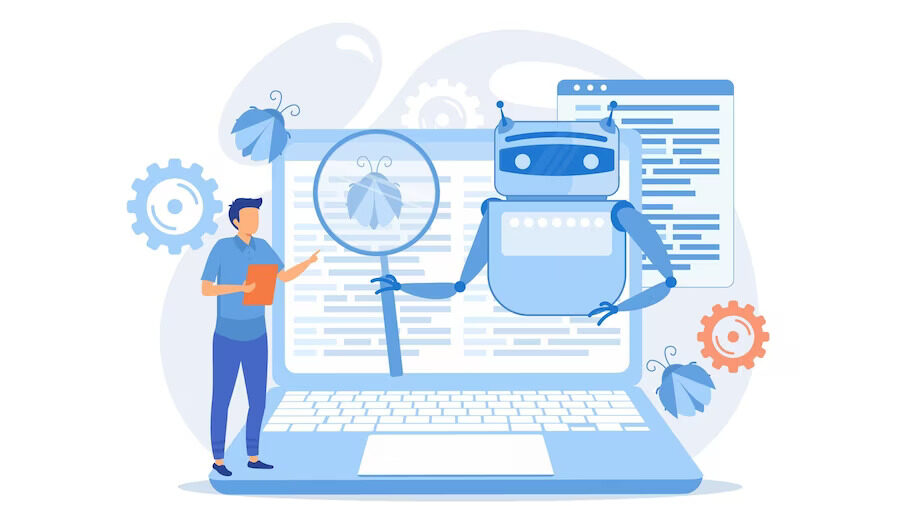Key concepts of Automation Testing
Automation of testing reduces the workload of developers and testers. Testing software is a complex process that requires stakeholders in the business, developers, and testers to coordinate their efforts. Automated testing uses specialized tools to conduct several software tests simultaneously. The testing process was meant to be sped up, and the overall testing coverage was intended to be expanded by employing automated testing. Test automation methods can cover more operating systems, devices, and scenarios than manual testing. As a result, their utilization results in improved mistake detection.
You can learn in-depth key automation testing processes by enrolling in an Automation Testing Certification Online from a reputed institute.
Critical Concepts of Automation Testing

In this article, let us look at some of the terminologies associated with Automation testing.
Unit testing
Unit testing requires executing tests on individual components or functions in isolation to determine whether or not they are performing as expected. Because it is typically performed during the program’s development phase, it is frequently the first automated testing performed on an application.
Unit tests are particularly advantageous since they aid in identifying problems at an earlier stage of the development process, reducing the cost of fixing errors. Unit tests are an excellent way to help make code more reusable and help engineers understand each application component’s operation.
Methods for performing unit testing can be classified into the two groups listed below.
Integration testing
- Integration testing requires testing all of an application’s different components together. Its major purpose is to determine whether or not the system as a whole meets the predetermined functional criteria.
- Various modules under examination are combined when testing is performed via integration, and their interactions are evaluated.
- Typically, testing at the integration level follows testing at the unit level. Integration testing helps ensure no friction in the interaction between the software’s many components, which is crucial for the software’s overall performance.
- Integration testing can be conducted in various ways, including the Big Bang Approach, Top-Down Approach, Bottom-Up Approach, and Sandwich Approach.
Smoke testing
- The purpose of smoke testing, also known as “Build Verification Testing” and “Confidence Testing,” is to verify the stability and viability of the deployed build of the software. These tests aim to assess whether or not the software can generate smoke.
- Smoke testing aims to evaluate whether an application should be shelved due to a lack of functionality or continue to be tested utilizing later phases. The smoke testing technique focuses on identifying whether the primary features of the application are functional or not.
- Smoke testing is the next stage after the created software features have been merged into the program build. In the event of a failure during this round of testing, the program is frequently returned to the development team for modification. Quality assurance engineers typically perform smoke testing.
Non- Functional testing:
- This testing examines a program’s various non-functional characteristics, such as its performance, reliability, usability, etc.
- Contrast functional testing with testing that examines not how well a product fulfills its functions but how well it executes those functions.
- The most notable non-functional testing subtypes include performance testing, reliability testing, security testing, load testing, scalability testing, and compatibility testing, among others.
Assessment of performance

Performance testing evaluates a software’s speed, stability, and responsiveness under load situations.
The fundamental purpose of performance testing is to detect any potential performance barriers in the program and remove those barriers so that the software can more effectively give the best possible outcomes to the end user.
Performance testing is crucial for ensuring a product’s success on the market. This is because performance testing helps discover potential issues end customers may encounter, such as a sluggish program operation under excessive demand. An Automation Testing Certification Online will help you further understand various parameters used in performance testing.
Additionally, mission-critical software and medical programs should be subjected to performance testing to ensure they can function reliably even under the most demanding situations.
Testing for regressive behavior
- Regression testing is commonly used to refer to the type of testing designated as maintenance testing.
- As part of the regression testing process, functional and non-functional tests must be re-executed following a change to the source code or the program to assess whether or not the software continues to perform as it did previously. When this occurs, the software is said to have “regressed” relative to its former performance.
- The fundamental purpose of regression testing is to verify that previously developed features and functionalities have yet to be rendered inoperable by changes to the underlying code.
Keyword-driven testing
- Integral to the keyword-driven testing methodology is utilizing data files containing terms essential to the examined application. Each word represents a series of activities that must be accomplished to complete a phase effectively.
- Keyword-driven testing needs the identification of specific keywords and the association of those terms with certain actions. Therefore, the relevant action will be executed automatically whenever the term is invoked.
Data-driven testing
- In data-driven testing, you will augment your automated test cases with data not directly linked to the evaluated system. Typically, the data is stored in a different location, such as a table or a spreadsheet, and is subsequently supplied into the test cases.
- Data-driven testing is efficient because testers usually have access to several data sets during testing, and developing a new test for each data set would take time and effort. Data-driven testing circumvents both problems by eliminating the requirement to create new tests.
Conclusion:
Those who believe that testing is cumbersome do not entirely understand the expense of having poor quality. It may be difficult to assess the impact of bugs and flaws on product value; if these issues are not handled, the situation can quickly become out of control.
You can avoid this problem by developing and improving your automated test suite using some of the abovementioned concepts. This will lay the groundwork for an excellent developer experience and remarkable, high-quality software.

















